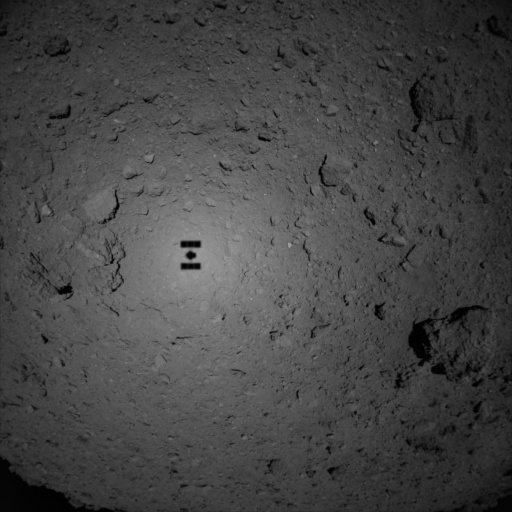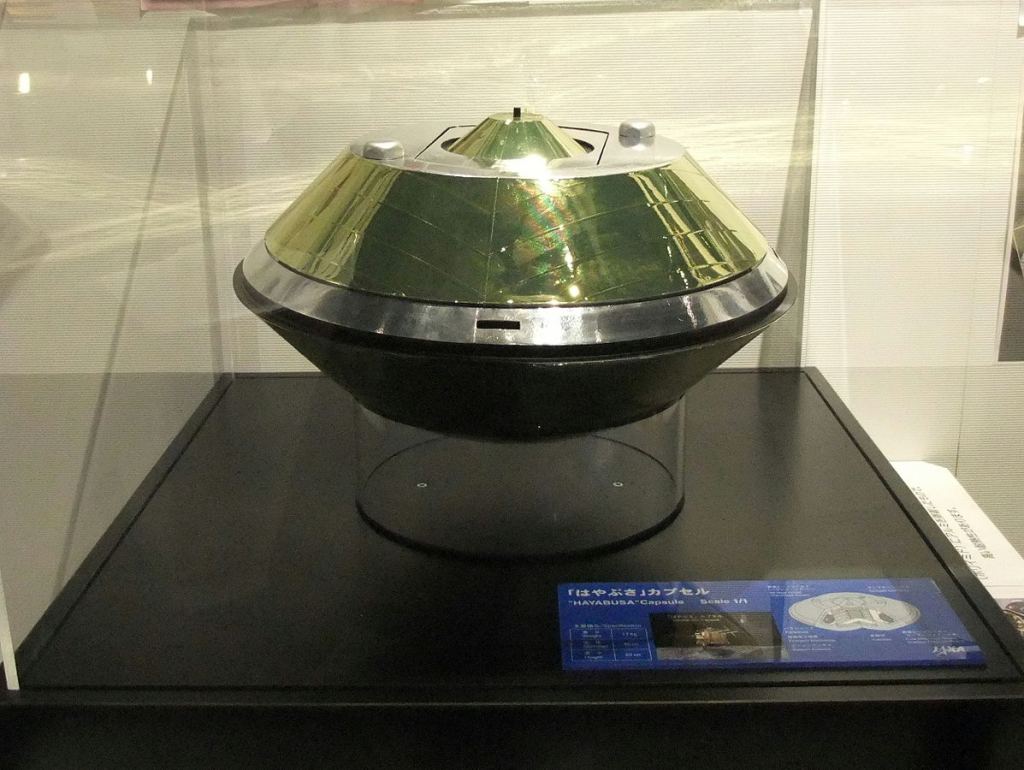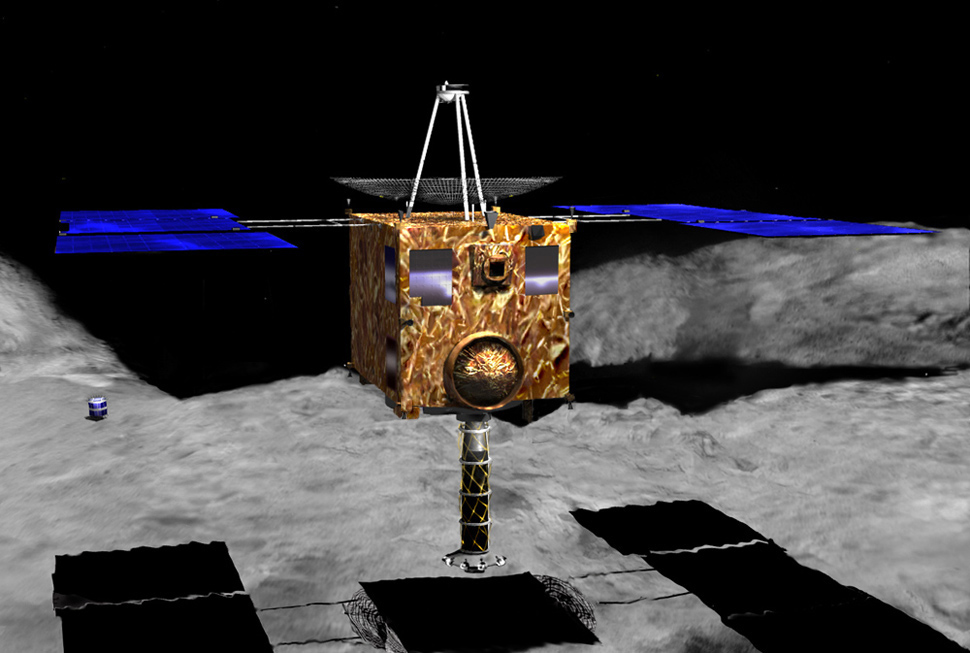Japan’s Hayabusa2 mission is about to get down to business. After arriving at asteroid Ryugu at the end of June 2018, and dispatching its tiny rovers to the surface, the spacecraft is about to approach the surface of the asteroid and get some samples.
Back in October, Hayabusa 2 performed some touchdown rehearsals. It left its home position about 20km from the surface, and used the LRF (Laser Range Finder), a group of four short-range lasers, to read the surface of the asteroid and guide its approach. It came as close as 20 meters from the surface during these operations. It also dropped a target marker at its landing site.

Hayabusa2 also performed a series of BOX-B operations in January. The spacecraft maneuvered into different positions around the asteroid to take pictures, while keeping its attitude steady at 20km. It has now imaged the asteroid from four distinct viewpoints, and is all set to collect its first sample.

Now it’s time to get down to business.
Hayabusa2 will collect three samples from Ryugu. The first two surface samples are set to be collected on February 22nd, when the spacecraft will approach the target landing site.
The samples will be collected by the sampling horn. The spacecraft itself will approach the surface, but won’t touch down. Its sampling horn protrudes from the bottom of the spacecraft, and when it touches the surface, it’ll fire a 5 gram tantalum bullet into the asteroid. The impact will release particles, and microgravity will do the rest. Particles will be trapped in the sampling horn, and then each one will be sealed inside its own container in the sample-return capsule (SRC).

The third sample collection will be a little bit different. For this one, the objective is to get a sub-surface sample from a little deeper in the asteroid, where material hasn’t been subjected to space weathering. This one is scheduled for April, 2019.
Hayabusa2 will use a much larger impactor for this one, in order to remove enough material to get at the sub-surface. The spacecraft will deploy a sort of free-flying gun that will fire a 2.5 kg copper impactor with an explosive charge. The system is called the Small Carry-on Impactor (SCI.)
Once the SCI is deployed, Hayabusa2 will also leave behind a deployable camera (DCAM3) to observe the precise location of the SCI. Then the spacecraft will be sent to the far side of the asteroid to avoid debris. Once it’s in a safe location, the SCI will fire its copper “bullet” from its position of 500 meters above the surface.
The SCI should make a crater about 2 meters in diameter, and should expose un-weathered, pristine material. Then, Hayabusa2 will wait patiently for the dust to clear.
After about two weeks, Hayabusa2 will land in the crater and collect a sample.
The three samples will each be held in separate containers inside the Sample Return Container while the spacecraft completes its science mission. It’ll spend the next few months at Ryugu, doing what spacecraft do. Next December, it will fire up its ion thrusters and head back to Earth.

One year after that, in December 2020, Hayabusa2 will approach Earth and send its SRC safely down in the Woomera Test Range in Australia, using a parachute and heat shield to land intact. Then the samples will be collected and the fun will begin.
Ryugu is an untarnished relic from the early days of our Solar System. It’s a carbonaceous near-Earth asteroid. These asteroids contain pristine material from the time period when the rocky planets formed. Studying the sample should tell scientists a lot about the minerals, ice, and organic compounds that were around at the time. The hope is that we will learn something important about the formation of Earth and the other rocky planets, and how life came to be.
After Hayabusa releases its SRC to Earth, it will still have propellant left. At that time, the mission might be extended. It won’t be landing on any other asteroids, or collecting any more samples, but it can still do science. JAXA says that one prime target for a science fly-by is asteroid 2001 WR1. That would occur in June, 2023.
If you self-identify as a Sample-Return Geek, then I highly recommend you check out how JAXA and the Hayabusa2 team selected their site for sample-taking. It’s very interesting. Right here.

